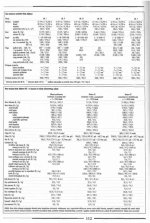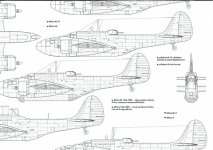my apologies for the poor choice of words.
i used "thoroughbred" only as the opposite of workhorse.
there was no comment about performance implied.
more that thoroughbreds get the press
and workhorses get the job done.
for example, the B-17 and B-25,
both excellent aircraft,
got most of the press coverage.
where as, the B-26, A-20 and A-187
are rarely mentioned...almost to the point
that one would hardly know they existed.
yes, that's an exaggeration, but,
i think you get my point.
i still find it amusing to watch a show
on the history or military channel
and hear the narrator speak
of one of the more glamorous aircraft,
only to see a group of A-20s or some such.
in the end,
we are fed stories about thoroughbreds
and little or nothing about workhorses.
why?
thoroughbreds are exciting.
workhorses, not so much
and there is a limited
amount of space
to write the story.
so much for the horse analogy.
oh wait...one more...
i think we've finished
beating a dead horse.
i used "thoroughbred" only as the opposite of workhorse.
there was no comment about performance implied.
more that thoroughbreds get the press
and workhorses get the job done.
for example, the B-17 and B-25,
both excellent aircraft,
got most of the press coverage.
where as, the B-26, A-20 and A-187
are rarely mentioned...almost to the point
that one would hardly know they existed.
yes, that's an exaggeration, but,
i think you get my point.
i still find it amusing to watch a show
on the history or military channel
and hear the narrator speak
of one of the more glamorous aircraft,
only to see a group of A-20s or some such.
in the end,
we are fed stories about thoroughbreds
and little or nothing about workhorses.
why?
thoroughbreds are exciting.
workhorses, not so much
and there is a limited
amount of space
to write the story.
so much for the horse analogy.
oh wait...one more...
i think we've finished
beating a dead horse.


